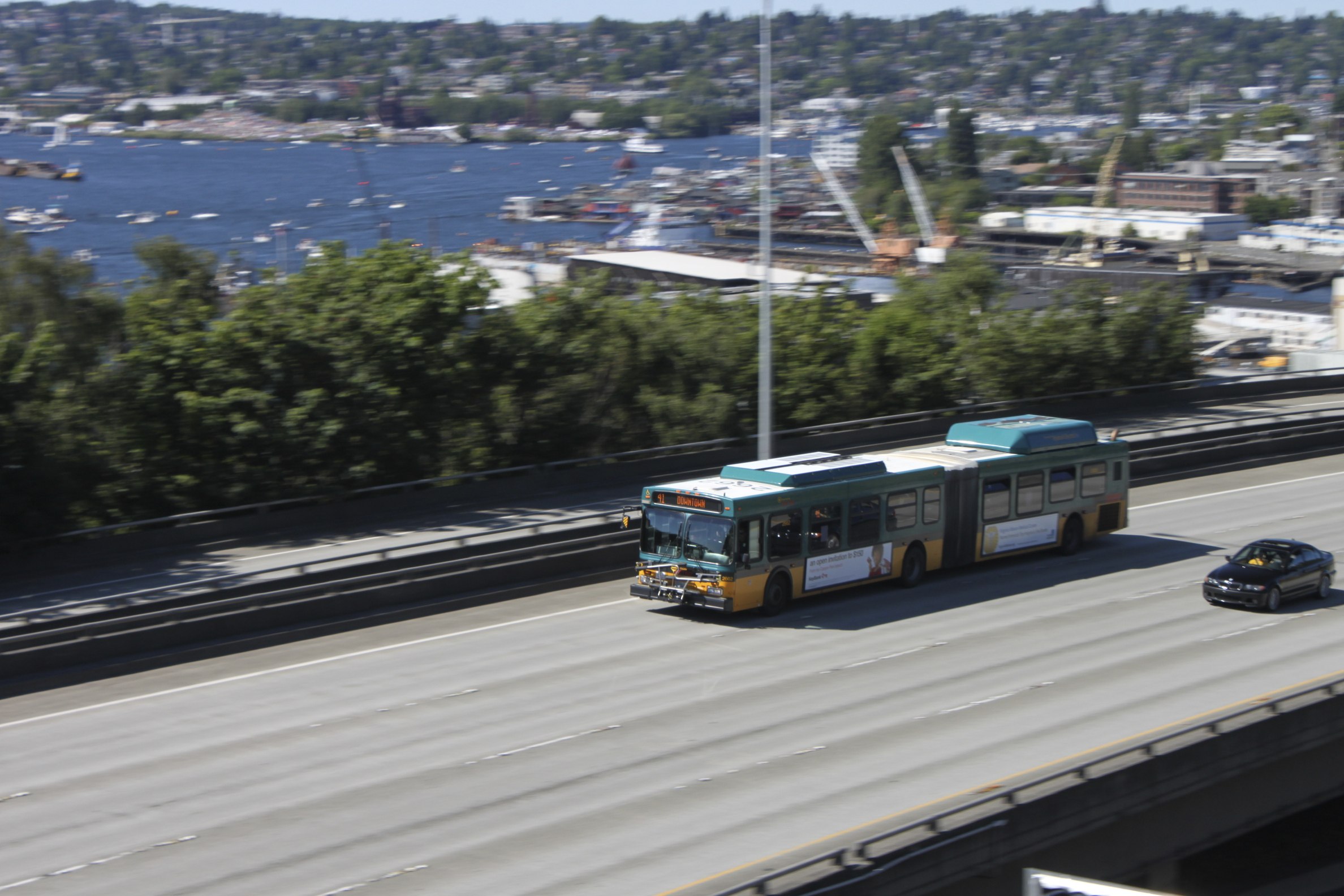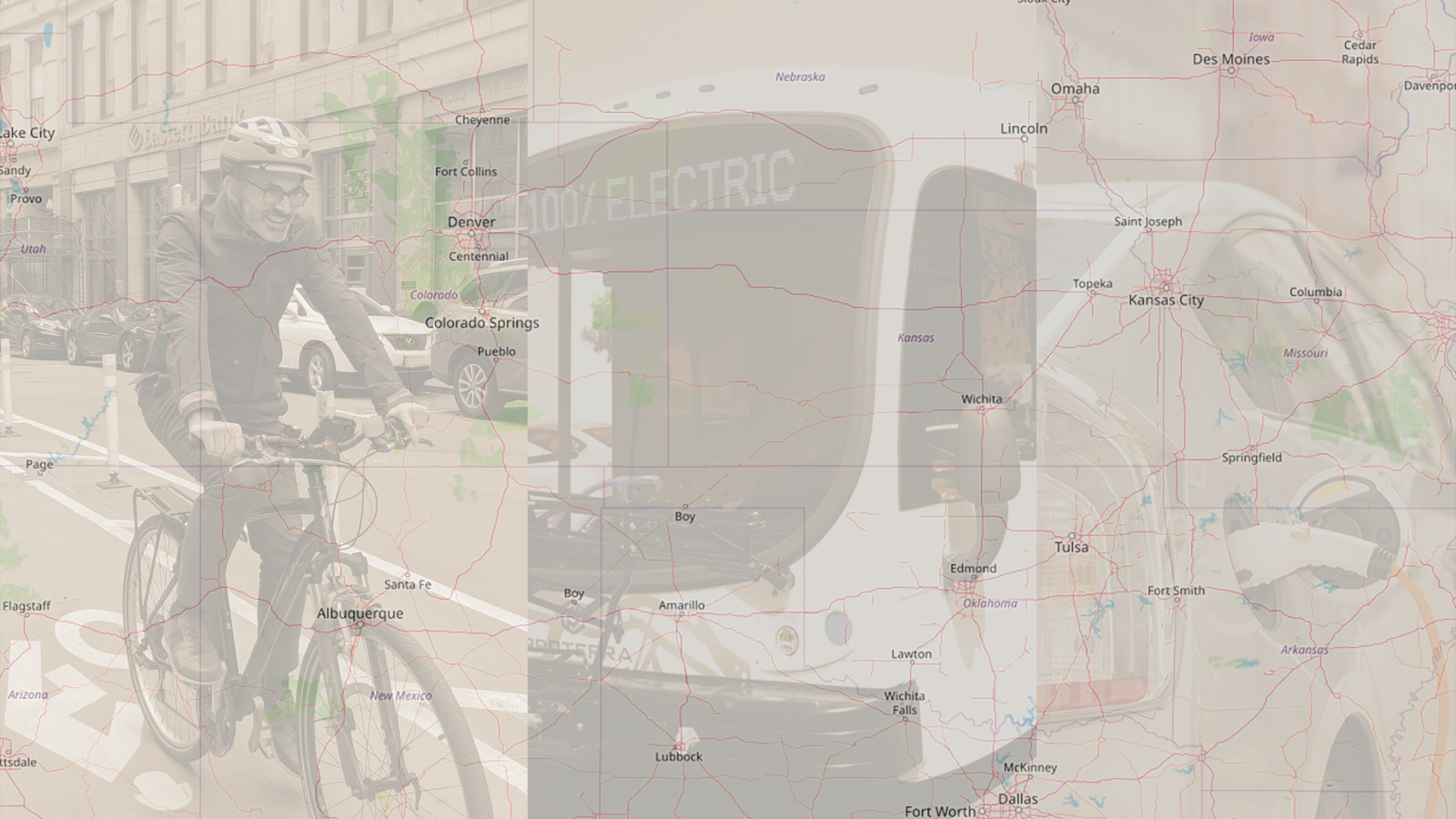
Transform Transportation
Strategies for a healthier future
America's transportation system is wrecking our health. Traffic-related air pollution kills an estimated 58,000 Americans every year, and increases the risk of serious health conditions, including lung cancer, stroke, heart disease, asthma, and even dementia.
There is a better way. By rebuilding our transportation system to give more people the option to spend less time in a car, by expanding access to active means of travel such as walking and biking, and by adopting zeroemission electric cars and buses, we can make our transportation safer, healthier,cleaner and more efficient.
Downloads
Illinois PIRG Education Fund

America’s transportation system is wrecking our health.
Traffic-related air pollution kills an esti mated 58,000 Americans every year, and increases the risk of serious health condi tions, including lung cancer, stroke, heart disease, asthma, and even dementia. More than 38,000 people die in vehicle crashes in the U.S. every year and millions more are seriously injured. Even our mental health and the health of our relationships are at risk – the time we spend driving, much less the time we spend stuck in stressful traffic, is time away from family, friends, exercise and leisure pursuits.
These health problems are a direct result of the way we’ve built our communities and our transportation system to be dependent on travel in fossil fuel-powered cars. Every year, Americans drive more than 3.2 tril lion miles – nearly 10,000 miles per person and more miles per capita than people almost anywhere else in the world. Since 1990, the number of vehicle miles trav eled by light-duty vehicles like cars and light-duty trucks has risen by more than 46 percent.
There is a better way.
By rebuilding our transportation system to give more people the option to spend less time in a car, by expanding access to active means of travel such as walk ing and biking, and by adopting zero emission electric cars and buses, we can make our transportation safer, healthier, cleaner and more efficient.
Transportation is a leading cause of air pollution that shortens lives and makes people sick.
In 2019, the transportation sector produced 55 percent of the nation’s emissions of nitro gen oxides (NOx) – a component of ozone smog – 16 percent of all emissions of volatile organic compounds (VOCs), and 2.7 percent of all emissions of primary particulate mat ter, often known as soot.
This pollution causes or exacerbates a range of serious health conditions, including:
- Cancer: Diesel exhaust is classed as a potential cancer agent by the World Health Organization and the U.S. EPA.6 Exposure to diesel exhaust has been associated with higher rates of lung cancer and greater risk for bladder cancer.7 Particulate matter and nitrogen dioxide, emitted in vehicle exhaust, have both been associated with increased risk for lung cancer.
- Stroke: Long-term exposure to particu late matter is associated with an up to 21 percent higher risk of stroke.
- Heart and lung disease: Exposure to nitrogen dioxide, found in vehicle exhaust, has been linked to heart and lung diseases and premature death. Exposure to particulate matter can result in vascular damage and accelerated decline of lung function.
- Asthma: Exposure to vehicle exhaust causes and exacerbates childhood asthma, and recent research suggests it also damages lung development even in non-asthmatic children, leading to increased risk of respiratory and cardio vascular diseases in later life.
- Dementia and cognitive decline among the elderly: One study estimates that between 7 and 11 percent of dementia cases among individuals living within 50 meters of a major road are attributable to traffic exposure.
The 45 million Americans who live in close proximity to busy roads or other traf fic-related infrastructure are at increased risk from the health impacts of traffic related pollution.
- Studies have found increased prevalence of asthma in children living within 100 meters of a freeway. One study estimat ed that over 27,000 cases of childhood asthma in Los Angeles County were at least partly attributable to pollution associated with living close to a major road.
- Living close to a major road increases the chances of suffering from an ischemic stroke by 42 percent and significantly increases the likelihood of dying as a result.
- Higher levels of noise and air pollution are associated with increases in coronary heart disease (CHD) mortality. One study found that individuals exposed to the highest levels of noise pollution are 22 percent more likely to die as a result of CHD than those exposed to the lowest levels.
American society’s dependence on cars puts us at risk every time we take to the roads, whether or not we’re in a car ourselves.
- Every year, approximately 38,000 Ameri cans are killed in car crashes, making car crashes the leading cause of death for Americans between the ages of 1 and 54.
- In 2018, nearly 6,300 pedestrians and more than 800 cyclists were killed in traffic related accidents, with more pedestrian and cyclist fatalities on the roads in 2018 than in any year since 1990.
Driving even takes a toll on the health of drivers themselves. Excessive driving can lead to a range of health impacts, including:
- Chronic stress and poor mental health: Commuters who travel to work by car experience substantially higher levels of stress, more negative moods and lower satisfaction with life than those who take active modes of transport.
- Obesity and high blood pressure: People with long car commutes are more likely to be obese and to have higher blood pressure. They are also less likely to do the recom mended amount of physical activity, putting them at increased risk of diabetes, cardiovas cular disease, osteoporosis, metabolic risk syndrome and certain kinds of cancer.
America’s transportation system is the nation’s number one source of greenhouse gas emissions and the largest single con tributor to the climate crisis, which will harm public health for decades to come.
In 2018, transportation accounted for 28 percent of the nation’s total greenhouse gas emissions – more than any other sector of the economy. If emissions continue at their current level, the impacts on public health will be severe.
- Extreme temperatures will kill more people. As climate change makes extreme variations in temperature more common, deaths and hospitalizations from extreme heat and cold will rise.
- Shifting weather patterns and high pollution will create high concentrations of ozone in some areas, causing more premature deaths and hospitalizations due to respiratory illness.
- Climate change will bring more disease, as shifting temperatures lead to geographic shifts of disease-carry ing insects like ticks and mosquitos. Warmer weather will increase the preva lence of pathogens like E. coli and salmo nella, which thrive in hot and humid conditions.
To address the health and environmental damage our transportation system causes, we need to completely transform the way we travel. And there are steps we can take right now, using proven policies and existing technology, that can help elimi nate traffic-related pollution and move America’s transportation system towards a greener, healthier future:
Getting more people moving by foot, bike and transit can immediately reduce both global warming emissions and the toxic pollutants from our car-dependent transportation system. Walking and biking infrastructure has been shown to benefit communities in a variety of ways, including increased safety, improved health and hap piness, and more freedom for older adults and people with mobility issues.
The U.S. should at least double the num ber of people who travel by foot, bike or transit by 2030. To achieve this goal, policy makers should:
- Ensure that walking, biking and transit are safe, affordable, accessible and enjoy able through infrastructure expansion and improvements.
- End subsidies that make driving artifi cially cheap to help make low-carbon transportation the easiest, cheapest, most convenient option.
Phasing out fossil fuel vehicles can enable the U.S. vehicle fleet to operate with zero greenhouse gas emissions from driving or charging, if such a shift is accompanied by a transition to a grid powered by clean, renewable energy. Electric vehicles also ben efit public health, as they do not emit harm ful tailpipe emissions that cause cancer, asthma and other health problems.
All new light-duty cars and trucks sold after 2035 should be electric vehicles. To achieve this goal, policymakers should:
- Set requirements to phase out fossil fuel-powered vehicles and adopt EV mandates.
- Make EVs cheaper to buy and own through tax credits and other incentives.
- Expand and improve EV charging infra structure.
Electrifying and improving transit can cre ate clean transit fleets for cities and schools, particularly if those fleets are powered by clean energy. Electric buses emit no tailpipe pollution and would significantly improve the health of children who take school buses and the urban populations often served by buses.
U.S. transit agencies and school districts should replace all transit and school buses with clean electric buses by 2030. To achieve this goal, policymakers should:
- Adopt electric bus commitments at all levels of government, including at transit agencies and school districts.
- Provide transit agencies with financial and technical assistance to help them make the switch to electric buses while maintaining or increasing service.
Topics
Find Out More


Green schools guide

Why privacy matters – even if you’ve got nothing to hide
